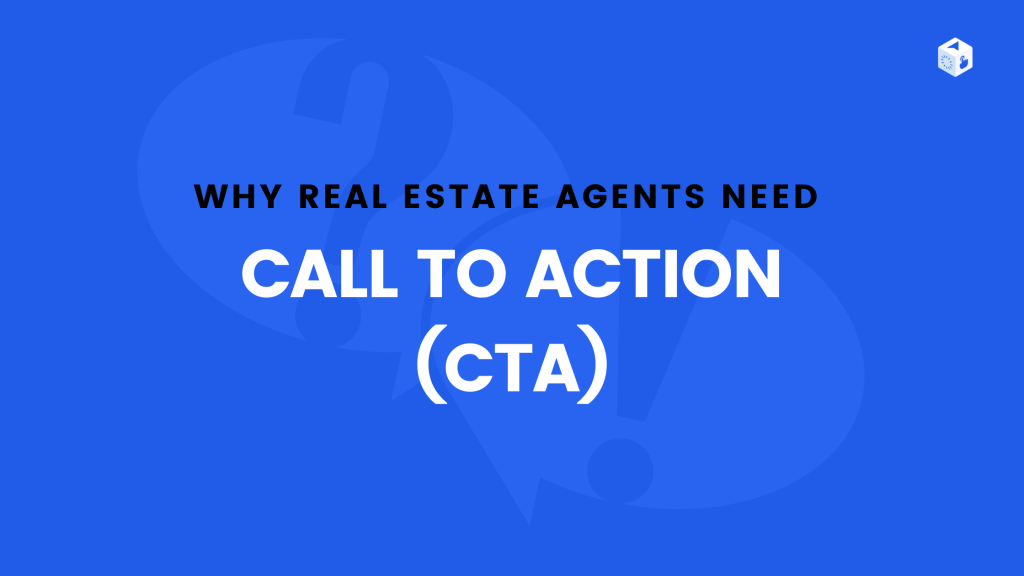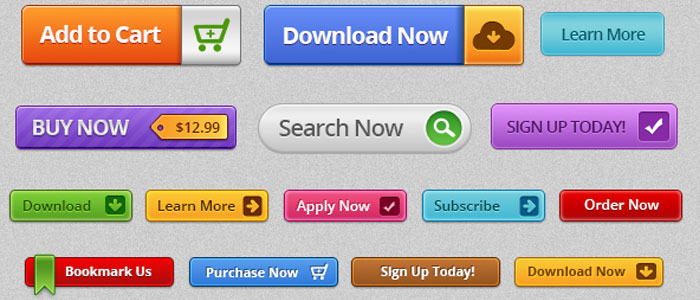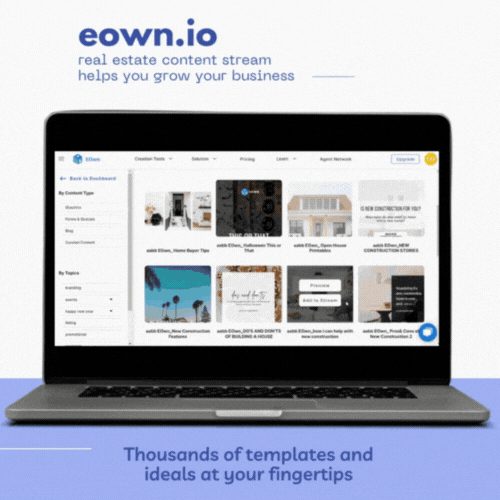In the competitive world of real estate marketing, capturing the attention of potential clients and driving conversions is paramount. Among the plenty of strategies and tools at a realtor’s disposal, one stands out as a powerful catalyst for engagement and success: the Call to Action (CTA).
In this article, we will delve into the Call to Action (CTA) meaning, exploring its significance in real estate marketing, their ability to drive conversions and generate leads, and their ultimate objective of prompting a specific response from the audience.
Table of Contents
What is a Call to Action (CTA)?

A Call to Action (CTA), in the realm of real estate marketing, refers to a strategically crafted message or element designed to encourage and guide potential clients towards a desired action. It serves as a direct invitation for prospects to take the next steps in their journey, whether it be scheduling a property viewing, signing up for a real estate-related newsletter, or contacting a realtor for further information.
Why Real Estate Agents Need CTAs?
In the ever-evolving landscape of real estate marketing, harnessing the power of CTAs is essential for realtors aiming to stand out from the competition and achieve remarkable success. By defining CTAs in the context of real estate marketing, understanding their function as a powerful tool for engagement, and recognizing their role in driving conversions and generating leads, real estate professionals can unlock a world of possibilities.

1. The meaning of Call to Action (CTAs) in Engaging Potential Clients
CTAs function as a potent tool for realtors to engage with potential clients by leveraging the power of persuasion and influence. When thoughtfully incorporated into marketing materials such as websites, social media posts, emails, or property listings, CTAs grab attention, create a sense of urgency, and facilitate seamless interaction. They act as a guiding beacon, gently leading prospects through the sales funnel, transforming mere viewers into active participants.
By utilizing compelling language and visually striking design, real estate professionals can leverage CTAs to showcase their unique value propositions, highlight special offers, or emphasize the benefits of their services. A well-crafted CTA can evoke emotions, spark curiosity, and entice potential clients to explore further, ultimately establishing a connection that sets the stage for successful conversions.
2. The meaning of Call to Action (CTAs) in Driving Conversions and Generating Leads
The primary objective of a CTA is to prompt a specific response or action from your audiences. Whether it is capturing real estate leads, encouraging property inquiries, or fostering direct communication, CTAs are the power tool in driving conversions and generating valuable leads for real estate professionals.
CTAs act as a bridge between a prospective client’s interest — or further desire and their commitment to taking action. By strategically placing CTAs at key touchpoints throughout the buyer’s journey, realtors can guide potential clients towards their desired goals. This could include CTAs prompting visitors to
- Sign up for property alerts
- Request a free market analysis
- Download exclusive guides
- Book consultations
- Ect.
Each interaction initiated by an effective CTA represents an opportunity for realtors to showcase their expertise, build trust, and nurture relationships with potential clients. Make sure you’ve defined your conversion goal clearly from starting to increase the power meaning of CTAs. Your goals will depend on your campaign purposes, the action you want your audiences to take on your that campaigns, just for example:
- Increasing sales
- Attracting high-quality leads
- Booking consultations
- Acquiring new members
- Increasing registrants
- Gaining subscriptions
How to get an Effective Call to Action in Real Estate Marketing?
The power of call to action meaning is a crucial element in any marketing campaign, as it compels your audience to take the desired action. Whether you want them to fill out a form, schedule a viewing, or sign up for a newsletter, a well-crafted CTA can significantly impact your conversion rates.

How to get an Effective Call to Action?
To ensure your CTAs are effective and compelling, explore some key strategies below to create an effective call to action that will captivate your target audience and drive them to act.
1. Personalize the CTA:
Remember! One size does not fit all when it comes to CTAs, this because it indeed to tailor CTAs to specific target audiences and of course, you should indicate before starting your Real Estate Marketing. Such a game-changer in today’s real estate marketing landscape.
By understanding your audience’s needs and preferences, you can create CTAs that speak directly to them, Use First-Person Speaker Angle in your CTAs — making them feel understood and valued. Instead of using generic language, consider customizing your CTA to match the preferences and pain points of different customer segments. By addressing their unique needs and desires, you create a sense of relevance and make your CTA more compelling.

For example, if you’re targeting
- First-time homebuyers, emphasize the benefits of taking the first step towards their dream home.
- Experienced investors, highlight the potential returns on investment.
And consider these questions:
- Does my CTA align with my conversion goal?
- Does my CTA reflect my value proposition?
2. Use action-oriented language CTAs
When it comes to meaning CTAs, clarity is key point. Your messaging should be clear, concise, and convey a sense of urgency. Use action-oriented language that prompts immediate action.
For instance, instead of using a passive phrase like “Learn more,” opt for a more direct approach like “Discover your dream home now!” or “Book your free consultation today!” This type of language instills a sense of excitement and motivates potential clients to take action right away.

Consider these questions:
- Does my CTA reflect my value offerings?
- Is it clear what the users are committing to by clicking my CTAs?
3. Use strong action verbs in your CTAs
Incorporating strong action verbs in your CTAs further enhances, answer the question ‘Does my CTA include the action needed to convert?’
Verbs like “discover,” “explore,” “start,” “unlock,” or “reserve” evoke a sense of excitement and impel your audience to engage. By choosing dynamic verbs, you can resonate with their aspirations and create a compelling call to action that motivates individuals to move forward in their real estate journey.

And of course, they should be appropriate for your goal.
Free download in a lead-generating landing page
- Get your copy
- Get white paper
- Grab your free guide
Free-trial sign-up
- Sign me up / Sign up
- Get started
- Try it for free
Booking, reservation
- Book a Home Valuation
- Book an Consultation/ Book my consultant
- Reserve my slot
Purchase
- Add to cart
- Buy now / Shop now
4. Where to Position Your CTA?
‘Can audiences easily convert with my CTA?’ — An effective meanings of CTA is not limited to a single marketing channel. To maximize its impact, incorporate CTAs across various platforms. In today’s digital landscape, social media, landing pages, gated content, forms and quizzes, emails, and other marketing channels are all valuable touchpoints.

5. Creating a sense of urgency and emotional triggers in your CTAs
Humans are driven by emotions and a sense of urgency. Incorporating both into your CTAs can be incredibly effective. By creating a sense of urgency, such as using phrases like “Limited time offer” or “Act now before it’s too late,” you tap into the fear of missing out (FOMO) and motivate potential clients to take immediate action. Additionally, appealing to emotions by highlighting the benefits of your offering, such as comfort, security, and a sense of belonging, can create a strong connection and encourage engagement.

That’s it! By implementing these strategies, you can create compelling CTAs that capture the attention of your target audience, encourage them to take the desired action, and ultimately drive success in your real estate endeavors.
Example of Successful Calls to Action in Real Estate
There are several real-life examples of successful CTA campaigns and analyzes the strategies and elements that made them effective. Furthermore, it provides actionable insights and takeaways for realtors to apply in their own marketing efforts.
“Schedule a Personalized Home Tour Today!”This CTA creates a sense of urgency and personalization, enticing potential buyers to take immediate action.
- Personalization: By emphasizing a “personalized home tour,” the CTA appeals to the individual needs and preferences of potential buyers, making it more compelling.
- Clear and concise message: The CTA clearly communicates the desired action and eliminates confusion.
- Urgency: The inclusion of the word “today” conveys a sense of immediacy, motivating potential buyers to act promptly.
To help you check off the boxes, consider these tips
- Use clear and concise language in your CTAs to avoid ambiguity and ensure clarity of the desired action.
- Create a sense of urgency by incorporating words like “now,” “today,” or “limited time” to encourage immediate response.
- Personalize your CTAs to resonate with the specific needs and desires of your target audience, increasing their likelihood of engagement.

Conclusion
By defining the CTAs meaning in the context of real estate marketing, understanding their function as a powerful tool for engagement, and recognizing their role in driving conversions and generating leads, real estate professionals can unlock a world of possibilities.
If you’re really looking to uncover your conversion potential, kick your optimization efforts up a notch using social media platforms offer opportunities for immediate engagement, while landing pages and gated content allow you to capture leads and nurture them further. Emails provide a direct line of communication, then forms and quizzes help qualify potential clients. By placing CTAs strategically across these channels, you ensure your message reaches a wider audience and increases the chances of conversion.






